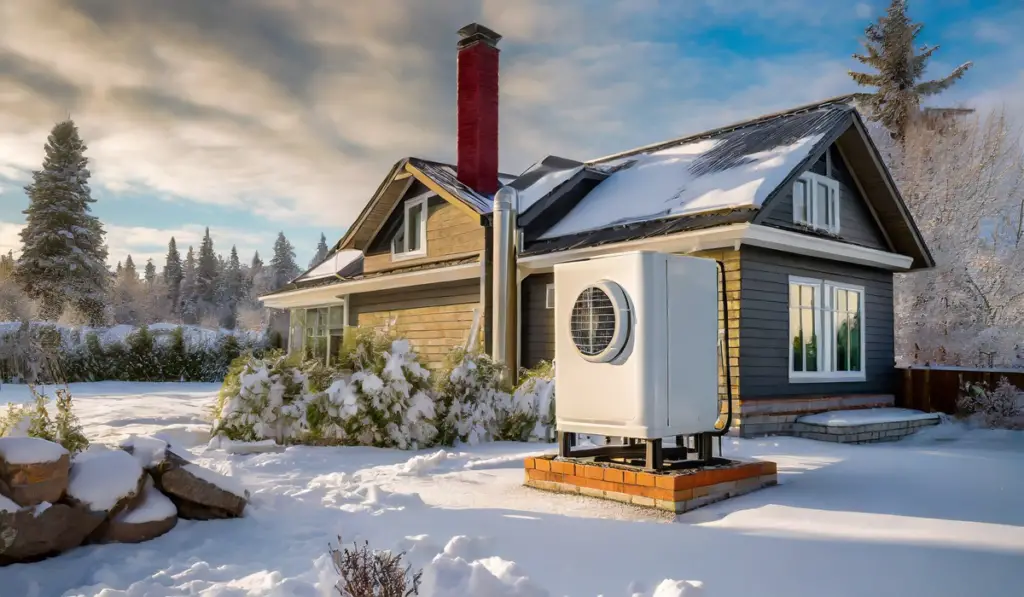In the quest for more sustainable and eco-friendly solutions, Canadians are increasingly turning to innovative technologies to reduce their carbon footprint. One such technology gaining popularity is the eco-friendly heat pump. This article delves into the intricacies of heat pump installation, exploring its environmental benefits and providing valuable insights for the Canadian audience.
Table of Contents

Understanding Heat Pumps
How Do Heat Pumps Work?
Heat pumps operate on a simple yet effective principle – they move heat from one place to another. During the winter, they extract heat from the outdoor air and transfer it inside to warm your home. In the summer, the process is reversed to cool indoor spaces. This technology is highly energy-efficient, making it an ideal choice for eco-conscious homeowners.
Types of Heat Pumps
There are various types of heat pumps, including air-source heat pumps (ASHP), ground-source heat pumps (GSHP), and water-source heat pumps. Each type has its unique advantages, and the choice depends on factors like climate, available space, and budget.
The Environmental Impact
Reduced Carbon Footprint
Traditional heating systems often rely on fossil fuels, contributing significantly to greenhouse gas emissions. Eco-friendly heat pumps, on the other hand, use electricity to transfer heat, resulting in lower carbon emissions. This shift towards electric heating aligns with Canada’s commitment to reducing its environmental impact.
Energy Efficiency and Renewable Energy
Heat pumps have high energy efficiency, as they move existing heat rather than generating it from scratch. Additionally, as Canada invests more in renewable energy sources, the electricity powering heat pumps becomes increasingly sustainable.
Eco-Friendly Heat Pump Installation Process
Site Assessment
Before installation, a thorough site assessment is conducted to determine the most suitable type of heat pump for the specific location. Factors such as climate, available space, and existing infrastructure play crucial roles in this decision-making process.
Professional Installation
Hiring a certified professional for eco-friendly heat pump installation ensures that the system operates at peak efficiency. Professionals assess the electrical capacity of the home, ensuring it can handle the increased demand from the heat pump. Proper installation guarantees optimal performance and longevity of the system.
Integration with Existing Systems
In many cases, heat pumps can integrate seamlessly with existing heating or cooling systems. This integration allows homeowners to use the heat pump as a primary or supplementary source of comfort, providing flexibility and convenience.
Financial Incentives and Cost Savings
Government Rebates
To encourage the adoption of eco-friendly technologies, various Canadian provinces offer rebates and incentives for heat pump installations. These financial incentives aim to offset the initial cost, making the transition to a sustainable heating solution more accessible for homeowners.
Long-Term Cost Savings
While the upfront cost of installing a heat pump might seem significant, the long-term savings on energy bills often outweigh this initial investment. The efficiency of heat pumps, coupled with potential government incentives, contributes to a cost-effective and environmentally friendly heating solution.
Frequently Asked Questions (FAQs)
Q: Are heat pumps suitable for extremely cold climates, such as those in northern Canada?
A: Yes, advancements in technology have made heat pumps increasingly effective in cold climates. However, it’s essential to choose a system designed for colder temperatures and ensure proper installation.
Q: Do heat pumps require a lot of maintenance?
A: Heat pumps generally have low maintenance requirements. Regular checks, cleaning, and professional inspections are recommended to ensure optimal performance.
Q: How long does it take for a heat pump to pay for itself in energy savings?
A: The payback period varies based on factors like energy prices, climate, and the efficiency of the heat pump. On average, homeowners can expect to see a return on investment within 5 to 10 years.
Q: Can I use a heat pump for both heating and cooling?
A: Yes, heat pumps offer both heating and cooling capabilities. They can efficiently keep your home comfortable year-round.
Conclusion
Embracing eco-friendly heat pump installation is a significant step towards a sustainable future for Canadian homes. The environmental benefits, coupled with financial incentives and long-term cost savings, make heat pumps an attractive option. As technology continues to advance, the widespread adoption of these systems will contribute to a greener and more energy-efficient Canada. Invest in the future by considering an eco-friendly heat pump for your home today.


